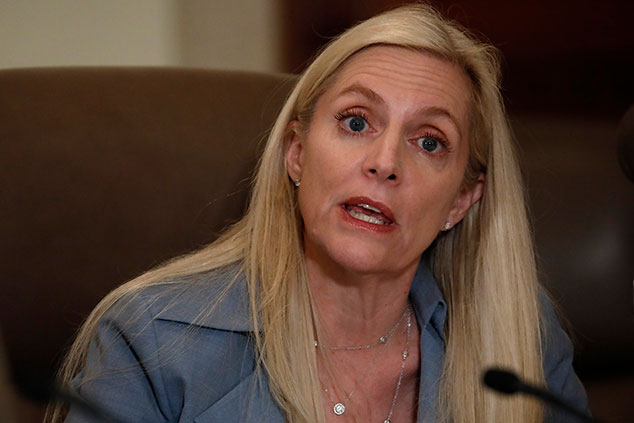
This article is taken from our FREE daily investment email Money Morning.
Every day, MoneyWeek’s executive editor John Stepek and guest contributors explain how current economic and political developments are affecting the markets and your wealth, and give you pointers on how you can profit.
In this week’s issue of MoneyWeek magazine
●
The Pacific Alliance: the four best bets in Latin America
●
Where to find Japan’s small, cash-rich bargain stocks
●
It’s too soon to sell out of tech stocks
●
A big trim for master-trust pension schemes
●
Three top-notch small European companies going cheap
● Share tips of the week
Not a subscriber? Sign up here
The Federal Reserve is effectively in charge of the US dollar, the most important currency in the world.
The strong US dollar has already caused a fair bit of havoc in the more fragile emerging markets.
So what the Fed does next is one of the biggest issues in financial markets right now.
So what do the tea leaves suggest?
The Fed may not be quite as tough as it sounds
Back in March, Federal Reserve governor Lael Brainard gave an important speech. Brainard was seen as a bit of a dove (ie, inclined to keep interest rates lower where possible). However, this speech changed that.
Summed up, she made the point that the big US corporate tax cuts meant that the Fed didn’t have to compensate for the lack of fiscal stimulus anymore. That particular “headwind” had turned into a “tailwind”.
In other words, if the government was helping to boost growth (simplistically, tax cuts or increased public spending amount to the same thing in economic terms, if not political ones) then the Fed no longer had to prop the economy up.
This was a departure from Janet Yellen’s generally much more cautious approach. A lot of investors took it to mean that the Fed is keen to raise interest rates more rapidly. And certainly the Fed is showing few signs of freezing on interest rates.
Indeed, a more recent speech from Brainard suggested that she’d be happy to keep rate rises going all through next year too.
And if you extrapolate from that – if you take the lesson that even the doves on the Fed rate-setting committee are turning hawkish – then it’s easy to conclude that the Fed is bound to keep hiking rates until it strangles the economy and chokes off inflation before it even gets going.
I suspect that this is the wrong message to take. There’s a big, big difference between raising rates and raising rates at a pace fast enough to choke off economic growth and inflation.
As Karl Smith noted on Bloomberg at the time, in part of her March speech, Brainard also noted that “it is conceivable we could see a mild, temporary overshoot of the inflation target over the medium term”. If this happened, she wouldn’t be worried, she suggested.
The Fed targets 2% as its inflation target. But increasingly the Fed has been keen to point out that this is a rough target. It is more inclined to take the Bank of England-style view (where in practice, any inflation number between 1% and 3% is acceptable, as long as it’s going in roughly the right direction), than a European Central Bank one (where 2% is viewed as a ceiling, not a central figure).
Moreover, Brainard also argued that there’s an argument to suggest that near-zero interest rates can harm “longer-run inflation expectations”. This, she argues, points to the “importance of ensuring underlying inflation does not slip below target in today’s new normal”.
To me, this is pretty interesting. Brainard is saying two things. Firstly, she’s acknowledging that near-zero interest rates have a psychological impact. If you keep rates at emergency levels for too long, then people effectively stop believing that prices will ever go up, which turns into something of a self-fulfilling prophecy.
Secondly, she’s making an argument here for being comfortable with inflation going above the 2% target. Because we’ve been in a near-deflationary environment for so long that it will take a while to convince people that things really are getting back to “normal”.
The Fed wants to get rates higher – but inflation is not its biggest worry
In short, I can see the Fed raising interest rates for a few key reasons. Firstly, it wants to get back to something approaching a level that could be viewed as within the bounds of normality.
Secondly, it’s worried (possibly somewhat belatedly) about the impact of easy monetary policy on asset markets. Quite a few Fed members have acknowledged in recent months that financial markets, rather than inflation, have been the source of instability in the most recent recessions.
However, you’ll notice that none of this means that the Fed is especially eager to choke off inflation. And because the US is the only major country raising interest rates at a steady pace just now, it’s easy to forget that the Fed is in fact still a good bit behind inflation.
At 1.75% to 2%, the Federal Funds rate is well below the 2.7% rise in the consumer price index (using the “all items” measure) seen in the year to August. Wages are starting to perk up too (as Merryn points out here).
So the real test for the Fed will come when and if we see wages picking up more strongly. Will it change the pace of rate hikes? Or continue with the slow and steady story?
I expect the latter. And at that point, we might see markets start to shift their view – from worrying about a Fed that’s going to jump the gun to one that’s all set to run the risk of inflation going a good bit higher than it has been in the recent past.